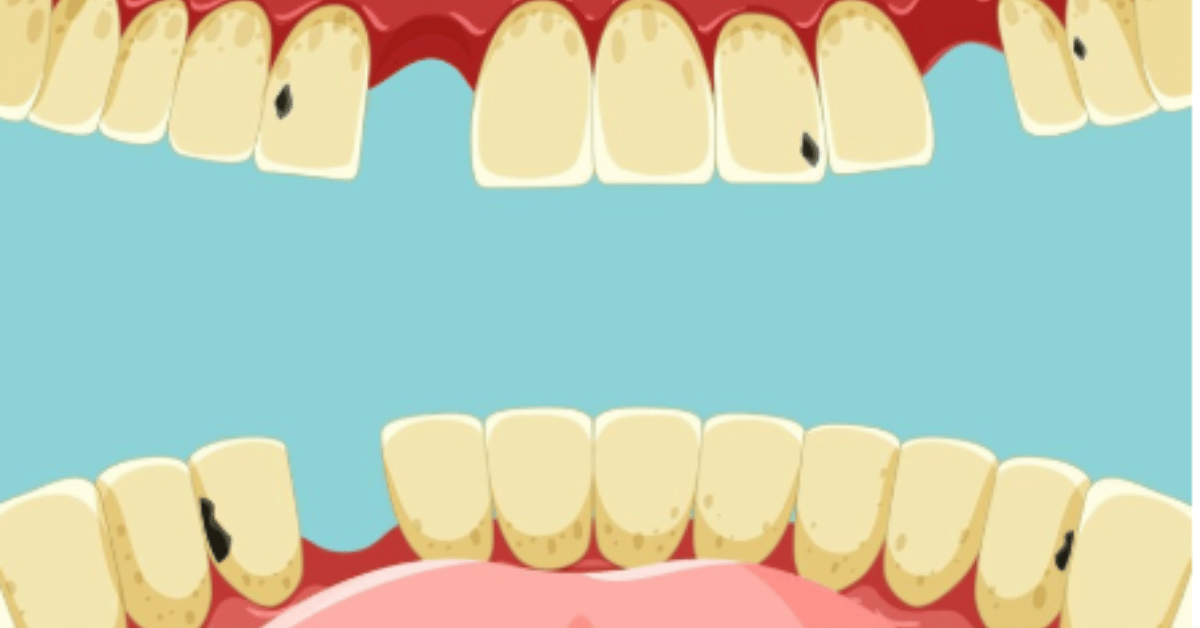A tooth gap, clinically known as diastema, refers to a visible space between two teeth—often most noticeable between the upper front teeth. While many perceive it as a harmless or even unique facial feature, others may feel self-conscious or concerned about its implications. This article provides a comprehensive and updated view on the causes, emotional impact, treatment options, and preventative measures associated with tooth gaps, aiming to answer all your key questions in one thorough read. Whether you’re exploring options for correction or simply trying to understand the condition, you’ll find everything here.
What Is a Tooth Gap?
A tooth gap is any space or gap that appears between two teeth. It most commonly occurs between the two upper front teeth (central incisors), but can also appear between other teeth. These gaps may be small and subtle or large and obvious. While some gaps are purely cosmetic, others can indicate underlying dental or skeletal issues.
Tooth gaps are more than a smile concern. They can affect oral health, influence speech, and even lead to uneven wear or misalignment over time if left untreated.
Causes of Tooth Gaps
Tooth gaps can emerge due to several reasons, many of which are natural and harmless, while others may require dental attention. Below is a breakdown of the most common causes:
Natural Growth Patterns
Children often develop temporary tooth gaps as baby teeth fall out and adult teeth grow in. This is usually self-correcting as their permanent teeth fill in the space.
Genetic Factors
Tooth gap tendencies can be inherited. If one or both parents have tooth gaps, the child may develop one as well.
Mismatch in Tooth and Jaw Size
If your teeth are too small for your jawbone, they may not completely fill the dental arch, leading to spaces.
Frenulum Attachment
An oversized labial frenulum (the tissue connecting your upper lip to the gums) can prevent the front teeth from closing properly.
Habits
Thumb-sucking, tongue-thrusting, or prolonged pacifier use can exert pressure that pushes teeth apart.
Periodontal Disease
Gum disease can lead to bone loss and tooth mobility, which may create or widen gaps between teeth.
Missing Teeth
When one or more teeth are congenitally missing or extracted, adjacent teeth may drift, leaving behind gaps.
Emotional and Social Impact
While tooth gaps are celebrated in some cultures and fashion circles as symbols of individuality, many individuals struggle with them emotionally. The impact can include:
- Reduced self-confidence during smiling or speaking
- Reluctance to be photographed or filmed
- Bullying or teasing in school-age children
- Overcompensation in facial expressions to hide the gap
Interestingly, in some parts of the world, especially among fashion models and celebrities, tooth gaps have gained popularity. However, for the average person, a gap may still feel more like a flaw than a feature.
Functional Implications of Tooth Gaps
Tooth gaps are not just cosmetic. Depending on their size and location, they can affect:
Speech
Large gaps can interfere with the pronunciation of “s” or “th” sounds.
Bite Function
Gaps can disrupt how teeth meet, leading to bite imbalances, jaw strain, or uneven tooth wear.
Food Trapping
Spaces between teeth can easily trap food particles, increasing the risk of plaque buildup and decay.
Gum Health
Unprotected gum areas between gapped teeth can be more prone to irritation or inflammation.
Treatment Options for Tooth Gaps
Not every gap needs treatment. However, if the gap affects confidence, function, or oral health, here are the most common solutions:
Orthodontic Braces
Braces gradually move teeth together and correct alignment. This remains the most effective long-term solution.
Clear Aligners
Clear plastic trays like Invisalign can close gaps while being discreet and removable.
Dental Bonding
A tooth-colored resin is applied to the sides of gapped teeth to close the space. Quick and affordable, but not permanent.
Veneers
Porcelain or composite shells are bonded to the teeth’s front surfaces to reshape and close gaps.
Dental Crowns
In some cases, crowns are used if the tooth requires structural reinforcement as well as cosmetic adjustment.
Frenectomy
If the labial frenulum is the cause, a minor surgical procedure can remove or reposition it to allow teeth to move closer together.
Implants or Bridges
If a gap is due to a missing tooth, an implant or dental bridge can restore the missing space and prevent shifting.
Comparing Treatment Options
| Treatment Method | Duration | Cost (Est.) | Pros | Cons | Best For |
|---|---|---|---|---|---|
| Braces | 12–24 months | Medium to High | Permanent correction | Visible, time-consuming | Adolescents and adults |
| Clear Aligners | 6–18 months | Medium | Discreet, removable | May not suit large gaps | Professionals, teens |
| Bonding | 1 visit | Low | Quick, affordable | Prone to chipping | Small gaps |
| Veneers | 2–3 visits | High | Aesthetic, durable | Irreversible | Cosmetic cases |
| Crowns | 2 visits | High | Structural repair | Tooth shaving needed | Damaged teeth |
| Frenectomy | 1 visit | Low | Stops gap recurrence | Minor surgery | Large frenulum cases |
| Implants/Bridges | Varies | Very High | Long-term solution | Invasive, expensive | Missing teeth gaps |
Preventing Tooth Gaps
While not all gaps are preventable—especially those rooted in genetics—certain strategies can help avoid or manage them:
- Encourage proper tongue posture and swallowing patterns early in childhood
- Discourage thumb-sucking or pacifier use beyond infancy
- Maintain regular dental visits to monitor shifting or crowding
- Treat gum disease at early stages to prevent bone and tooth loss
- Use retainers after orthodontic treatment to prevent relapse
Living with a Tooth Gap
Many people choose to embrace their gaps as part of their identity. Famous personalities like Madonna, Eddie Murphy, and Georgia May Jagger have made their tooth gaps iconic. If you are confident with your appearance and your gap causes no functional issues, treatment may be unnecessary.
However, if you’re self-conscious or facing functional problems, it’s important to consult a dentist or orthodontist. There is no shame in seeking change, and modern dentistry offers solutions for every comfort level and budget.
Children and Tooth Gaps
In children, gaps are a normal part of dental development. As baby teeth fall out and adult teeth erupt, gaps naturally appear and often self-correct. Dentists usually wait until most adult teeth have erupted before recommending treatment unless a gap is interfering with function or speech.
Parents should observe for:
- Speech delays
- Difficulty chewing
- Persistent thumb-sucking
- Spacing that increases over time
Early orthodontic evaluation by age 7 is generally recommended by the American Association of Orthodontists.
Cultural Views on Tooth Gaps
The perception of tooth gaps varies dramatically across cultures. In some African countries, gaps are seen as symbols of beauty and fertility. In France, a tooth gap is affectionately called “dents du bonheur” — teeth of happiness. These diverse interpretations show how subjective dental beauty truly is.
Modern advertising and fashion also play a role. In recent years, designers and agencies have cast models specifically because of their tooth gaps, challenging the traditional idea of a “perfect smile.”
Psychological Insights
Dental appearance affects self-esteem more than most people realize. A tooth gap may cause:
- Social withdrawal
- Over-consciousness in speech
- Avoidance of dating or professional opportunities
- Body dysmorphia in severe cases
For these reasons, addressing emotional health alongside dental treatment can be beneficial. Therapists and confidence coaches can help individuals reframe their self-image.
Questions to Ask Before Choosing Treatment
Before committing to a specific solution, consider asking your dentist:
- What’s the underlying cause of my gap?
- Is it likely to grow over time?
- Are there health implications if I leave it untreated?
- What’s the most minimally invasive solution for me?
- Will insurance cover my treatment?
Conclusion: Embrace or Adjust—The Choice Is Yours
A tooth gap can be a mark of distinction, a minor dental issue, or a significant cosmetic concern. Whether you choose to correct it or embrace it, the key is understanding its origin, implications, and options. With today’s range of treatments and rising societal acceptance of diverse smiles, individuals have more choices—and more confidence—than ever before.
So, if you’re standing in front of a mirror wondering whether that gap defines or defies your smile, know this: it’s not about perfection. It’s about personal comfort and confidence. Dentistry can change your smile—but only you define its worth.
FAQs
Is a tooth gap harmful to health?
Not always. Small gaps may be harmless, but larger ones can affect bite and hygiene.
Do tooth gaps close naturally?
In children, yes. In adults, they usually require orthodontic or cosmetic intervention.
Can tooth gaps reopen after braces?
Yes, especially without a retainer. Long-term retention is crucial to maintain results.
Are veneers a permanent solution?
They last long but may need replacement every 10–15 years. The natural tooth is permanently altered.
Is bonding reversible?
Yes, dental bonding can be removed and redone, unlike veneers or crowns.











